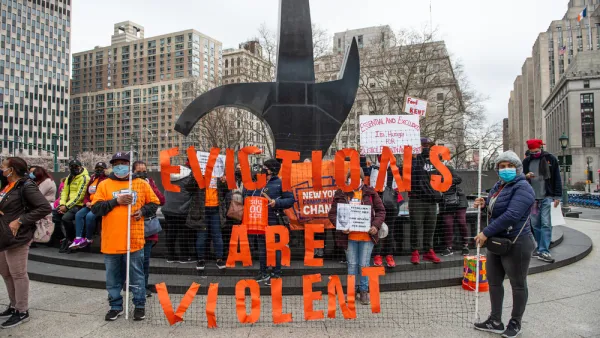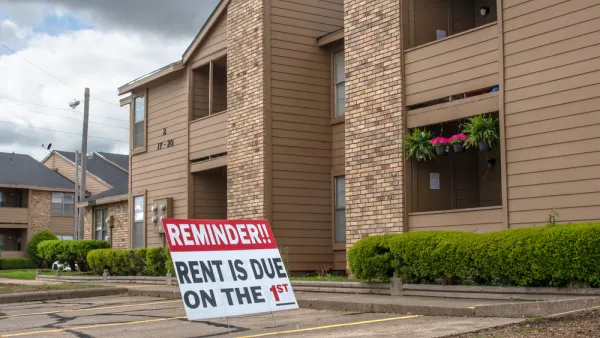The National Equity Atlas has been tracking national rent debt, which takes on new meaning since the federal eviction moratorium expired at the end of July.

Throughout the pandemic, a series of clashing data points has hung over the country like a dark cloud ready to burst. Millions of renters and property owners struggled to pay bills, falling behind on payments and racking up debt and arrears. Eviction moratoria in place at various levels of government around the country proved only sporadically effective (and frequently illegal). At the same time, poverty dropped by record levels and low-wage jobs all over the country are reportedly understaffed, presumably at least in part because people have better options. Yet, homelessness has also spiked at "devastating" rates, according to data released by the U.S. Department of Housing and Urban Development in July.
An article by Jillian Berman keeps the focus on the rent debt that has new consequences since the expiration of the federal eviction moratorium, estimating that 6.4 million households owe an estimated $21.3 billion in rent debt. The data comes from analysis of June 23 – July 5, 2021 Census Household Pulse Survey by the National Equity Atlas. '
The National Equity Atlas has created a dashboard of interactive maps and infographics to track mounting rent debt and the potential of mass evictions as "one of the most pressing equity issues created by the pandemic." The National Equity Atlas calls on policymakers to eliminate rent debt and prevent evictions.
As noted by Berman, rent debt pre-dates the pandemic, but Covid-19 likely exacerbated the problem. Although previous economic relief packages approved by the federal government have devoted $46 billion worth of rent relief funds to the growing challenge, relief funds are reaching struggling renters too slowly to effectively mitigate the risk in the rental housing market.
FULL STORY: The looming $21.3 billion in debt that could cost Americans their homes

National Parks Layoffs Will Cause Communities to Lose Billions
Thousands of essential park workers were laid off this week, just before the busy spring break season.

Retro-silient?: America’s First “Eco-burb,” The Woodlands Turns 50
A master-planned community north of Houston offers lessons on green infrastructure and resilient design, but falls short of its founder’s lofty affordability and walkability goals.

Delivering for America Plan Will Downgrade Mail Service in at Least 49.5 Percent of Zip Codes
Republican and Democrat lawmakers criticize the plan for its disproportionate negative impact on rural communities.

Test News Post 1
This is a summary

Test News Headline 46
Test for the image on the front page.

Balancing Bombs and Butterflies: How the National Guard Protects a Rare Species
The National Guard at Fort Indiantown Gap uses GIS technology and land management strategies to balance military training with conservation efforts, ensuring the survival of the rare eastern regal fritillary butterfly.
Urban Design for Planners 1: Software Tools
This six-course series explores essential urban design concepts using open source software and equips planners with the tools they need to participate fully in the urban design process.
Planning for Universal Design
Learn the tools for implementing Universal Design in planning regulations.
EMC Planning Group, Inc.
Planetizen
Planetizen
Mpact (formerly Rail~Volution)
Great Falls Development Authority, Inc.
HUDs Office of Policy Development and Research
NYU Wagner Graduate School of Public Service




























